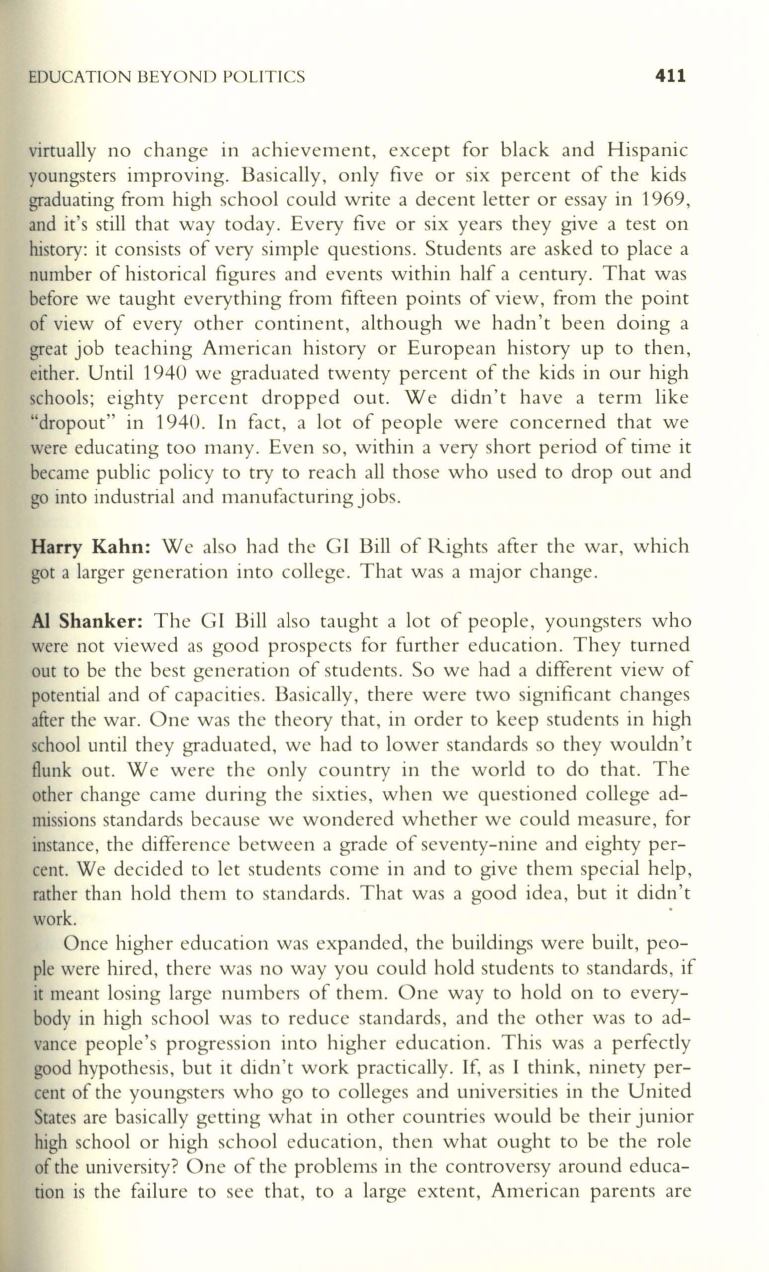
EDUCATION BEYOND POLITICS
411
virtually no change in achievement, except for black and Hispanic
youngsters improving. Basically, only five or six percent of the kids
graduating from high school could write a decent letter or essay in 1969,
and it's still that way today. Every five or six years they give a test on
history: it consists of very simple questions. Students are asked to place a
number of historical figures and events within half a century. That was
before we taught everything from fifteen points of view, from the point
of view of every other continent, although we hadn't been doing a
great job teaching American history or European history up to then,
either. Until 1940 we graduated twenty percent of the kids in our high
schools; eighty percent dropped out. We didn't have a term like
"dropout" in 1940. In fact, a lot of people were concerned that we
were educating too many. Even so, within a very short period of time it
became public policy to try to reach all those who used to drop out and
go into industrial and manufacturing jobs.
Harry Kahn:
We also had the GI Bill of Rights after the war, which
got a larger generation into college. That was a major change.
AI Shanker:
The GI Bill also taught a lot of people, youngsters who
were not viewed as good prospects for further education. They turned
out to be the best generation of students. So we had a different view of
potential and of capacities. Basically, there were two significant changes
after the war. One was the theory that, in order to keep students in high
school until they graduated, we had to lower standards so they wouldn't
flunk out. We were the only country in the world to do that. The
other change came during the sixties, when we questioned college ad–
missions standards because we wondered whether we could measure, for
instance, the difference between a grade of seventy-nine and eighty per–
cent. We decided to let students come in and to give them special help,
rather than hold them to standards. That was a good idea, but it didn't
~~.
.
Once higher education was expanded, the buildings were built, peo–
ple were hired, there was no way you could hold students to standards, if
it meant losing large numbers of them. One way to hold on to every–
body in high school was to reduce standards, and the other was to ad–
vance people's progression into higher education. This was a perfectly
good hypothesis, but it didn 't work practically. If, as I think, ninety per–
cent of the youngsters who go to colleges and universities in the United
States are basically getting what in other countries would be their junior
high school or high school education, then what ought
to
be the role
of the university? One of the problems in the controversy around educa–
tion is the failure to see that, to a large extent, American parents are


